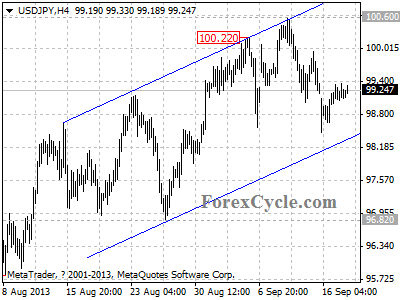By The Sizemore Letter
Europe has been calm of late. Former Italian prime minister Silvio Berlusconi is facing house arrest, and it barely makes the news. A year ago, this would have caused a run on the euro and roiled the world’s capital markets.
And Greece, the country that first comes to mind when the words “Europe” and “crisis” are used in the same sentence, has been relatively quiet as well.
Actually, I should rephrase that. Greece is far from quiet. In fact, even doctors have taken to the streets in protest over…well…who cares, really. The fact is that the capital markets have stopped reacting to news out of Greece. Greek bond yields have bounced around in a fairly tight range all year and have actually been falling for the past two months…in spite of the global Fed tapering scare. There is a tacit understanding that Germany will continue to keep the Greek government afloat indefinitely, so long as Greece continues to at least make a credible effort at reform and austerity.
It’s not too terribly surprising that Greece will need more bailout funds this year and next. But what is surprising is that Greece is slowly clawing its way out of perma-crisis. Greece may actually post a primary budget surplus (i.e. a budget surplus excluding interest payments on existing debt) this year. In fact, through the first seven months of the year, Greece reported a primary surplus of €2.6 billion.
Yes, you read that correctly, and no, it wasn’t a sarcastic joke. Greece’s condition is actually improving. The country still depends on its bailout lifeline for the fragile stability it has at the moment; any attempt to go directly to the capital markets would plunge the country back into crisis and probably default and ejection from the Eurozone. And its economy is still contracting; GDP shrank by 4.6% last quarter. More than a quarter of Greek are unemployed (see chart), and wages are falling.
Still, the GDP contraction is the slowest in two years, and we should remember that employment is a lagging indicator. It’s not unusual to see unemployment remain high in the early stages of recover.
Is it time to consider Greek stocks? Fellow “Best Stocks of 2013” contestant Meb Faber certainly thought so when he recommended the Global X Funds Greece ETF (GREK) back in January. Meb was a little early on the call (which is a common curse on value investments), but he correctly noted that Greece had the cheapest stock market in the world.
Almost exactly two years ago, I mentioned three Greek stocks I would consider buying once the dust had settled after a sovereign debt default and possible ejection from the Eurozone. Well, the default never happened. But are the stocks a buy?
I’ll start with the Coca-Cola Hellenic Bottling Company (CCH). Despite its name, this is not really a Greek stock. It is based in Switzerland, has operations in 28 countries and serves 581 million people, primarily in Eastern and Southeastern Europe. Though listed on the Athens Stock Exchange, it also trades on the London Stock Exchange and on the NYSE as an ADR.
None of this is lost on the stock price. For a nominally-Greek stock, Coca-Cola HBC is not cheap. It trades for 1.25 sales—only slightly cheaper than Coca-Cola Enterprises (CCE), the Coke bottler for most of Western Europe. It’s price / earnings ratio—at 52.7—is overstated due to earnings being depressed. But suffice it to say, this stock is not a screaming bargain by any stretch.
Hellenic Telecommunications Organization SA (HLTOY), as Greece’s leading phone, internet, and mobile provider, is a much purer play on Greece. Its stock has also had an impressive run, up over 500% since bottoming last summer.
Yet despite the run-up, shares are not expensive, trading at 12 times depressed earnings and 0.85 times sales. If you’re bullish on Greece, this is probably the safest way to play a rebound, though I should emphasize that Greece is still a very risky market.
And finally, we get to the National Bank of Greece (NBG), the third stock I said that I would consider two years ago. Be careful with this one. If Greece were to leave the euro or outright default on its debts—which, though not likely at this point, cannot be ruled out—this stock will be worthless. If you buy this, you are making a bet that Greece stays in the Eurozone and continues to service its debts indefinitely. Still, trading at 4 times earnings and only a few dollars away from its all-time lows hit earlier this summer, it might be worth a speculative bet.
This article first appeared on InvestorPlace.
Charles Lewis Sizemore, CFA, is the editor of the Sizemore Investment Letter and the chief investment officer of investments firm Sizemore Capital Management. As of this writing, he had no positions in any security mentioned. Click here to learn about his top 5 global investing trends and get your copy of “The Top 5 Million Dollar Trends of 2013.”
This article first appeared on Sizemore Insights as Has Greece turned the corner?



